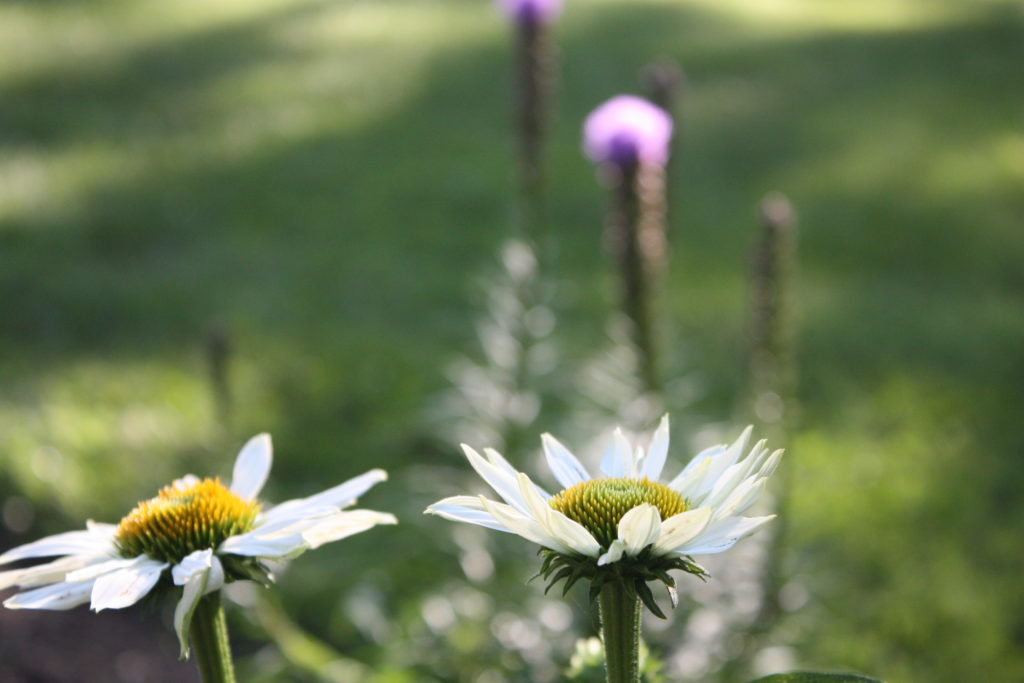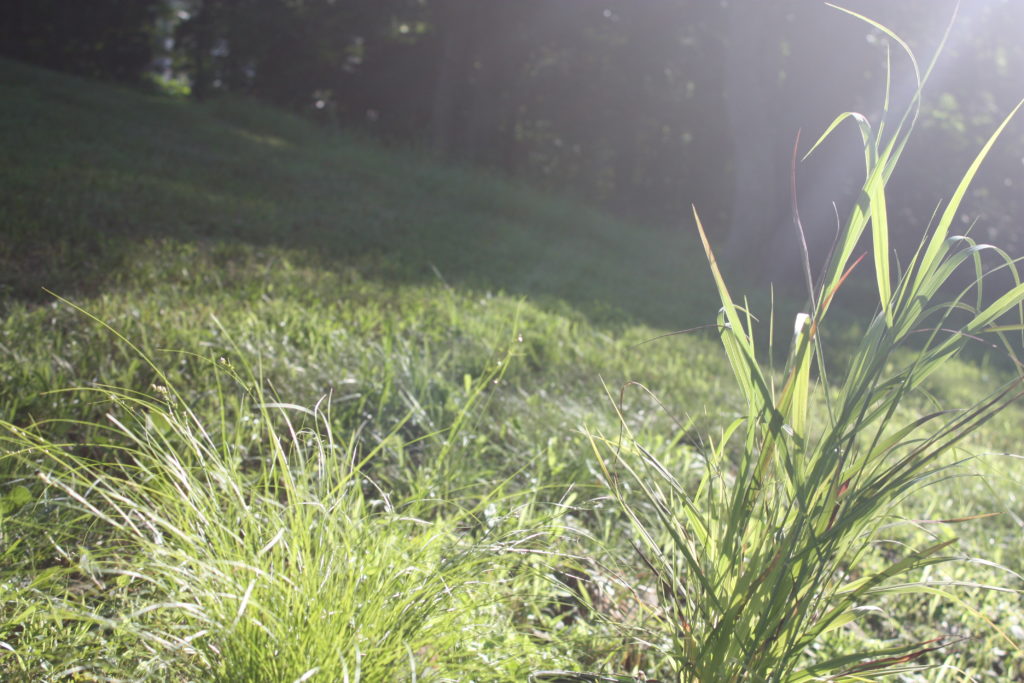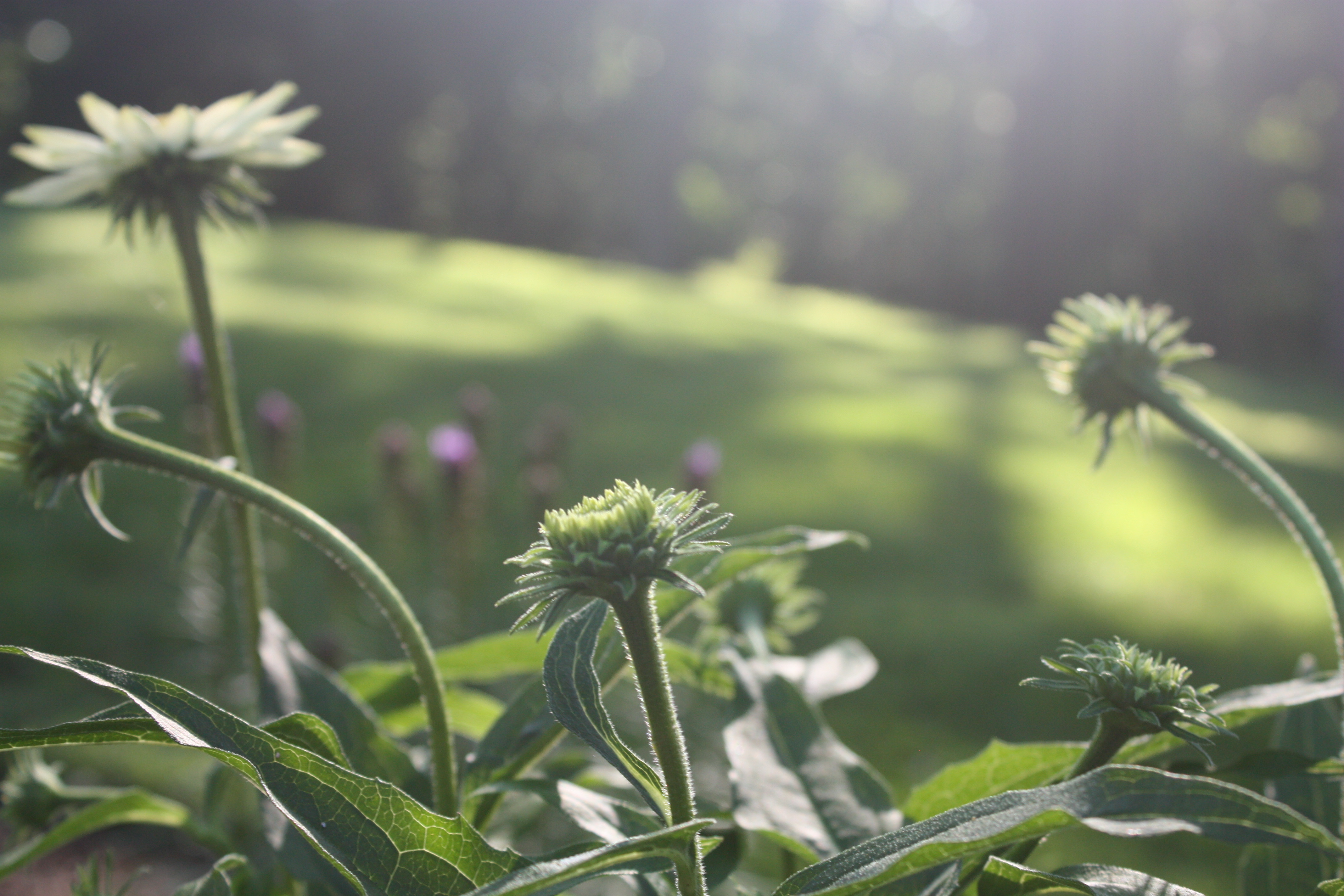Maybe I’ve done things a little of of order with this small bed at behind the house. I’m working to add native grasses to give this a unifying backbone, but frankly that’s a little challenging retroactively. Or maybe I’ll just think of it as my ‘painter’ approach to gardening!
Shown here are liatris (gayfeather) and white echinacea (coneflower) in their second year. They’re attracting a wide variety of pollinators — including many dragonflies this year — while holding their own near a black walnut tree in an area that gets full sun for good portions of the day. They look lovely backlit in the evening, pleasant to view puttering in the backyard or from the kitchen window.

Not shown is what I’m currently adding, prairie dropseed (sporobolus heterolepis), a native grass that should add movement in the breeze, changing color into fall and winter, and providing additional interest as the sun sets. The seeds are described by many as smelling slightly of coriander or popcorn, depending on the source! And it is allegedly not fussy about soil, a good thing in this disturbed area that is full of clay. Photos of the finished bed will follow down the road.
I have a new interest in learning about and incorporating native grasses., for their ability to create a foundation, or punctuation, within the planting. Given how some can have roots up to several feet deep and self-seed, I’m being very cautious and will be planting these two over in a naturalized edge of the yard, where I have been planting bare-root serviceberry and American hazelnut, along with some more mature native viburnum and native witch hazels. Shown below are containers featuring appalachian sedge (on the left) — an experiment in a no-maintenance ground cover to replace the abundant Japanese stilt grass in the woodland border areas — and switch grass (on the right) as a potential accent.

